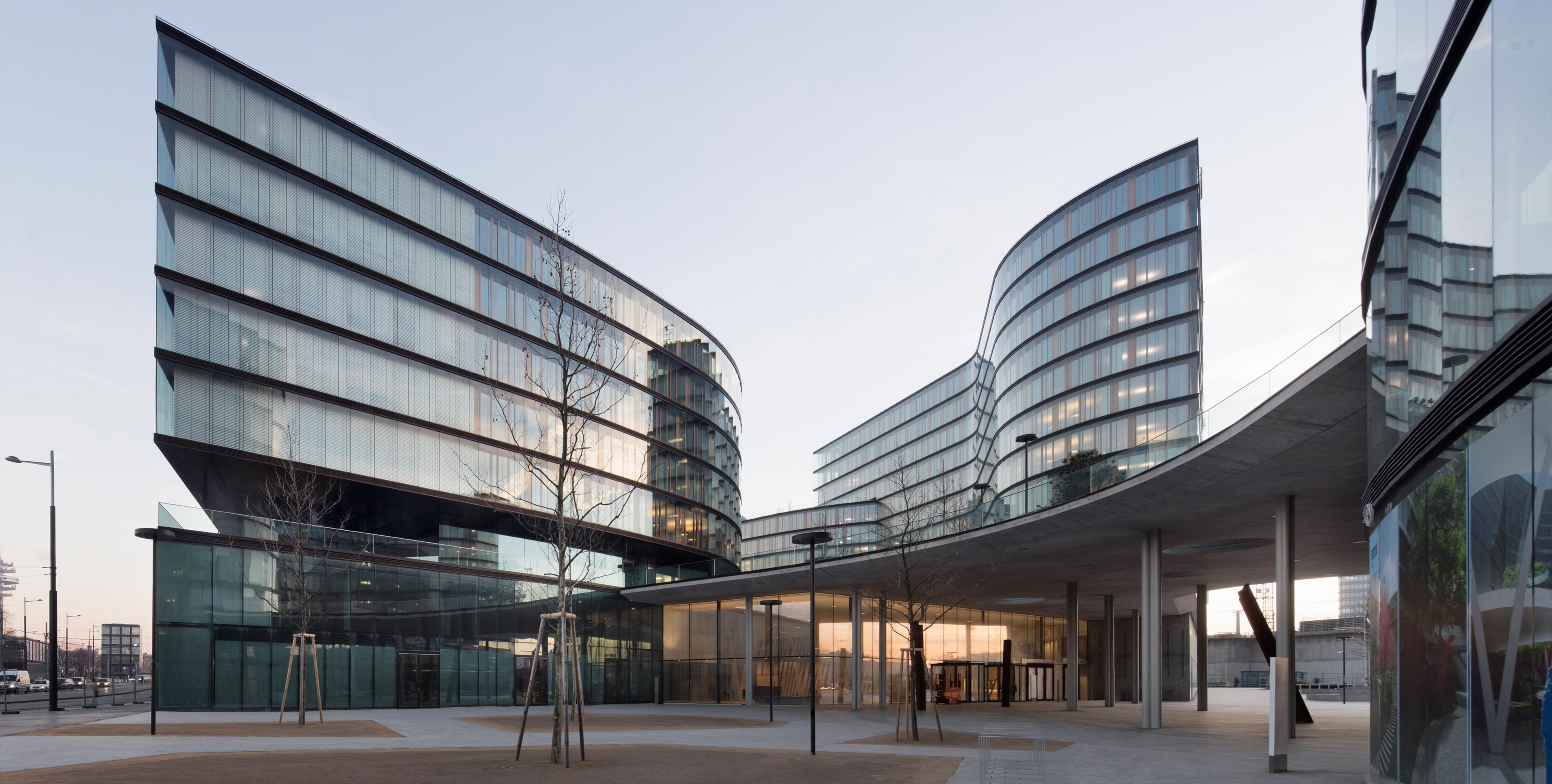Eastside indoor swimming pool Kassel
KM Architects

Products
Berlin architect Hans Kollhoff devised a handle design for his projects that consciously incorporates design elements from the 1930s. His pared-down door handles, window handles and window fasteners were immediately embraced by the market as authentic interpretations.

Repurposing a Bauhaus building
Owning a building from the Bauhaus era is surely what many architects dream of. In the case of the KM Architects practice run by Keivan Karampour, Marc Köhler and Thomas Meyer, it’s a dream come true. The property the architects bought in order to house their own officing amongst other things is a rather unusual one with sporting connotations. The former indoor swimming pool in the Kassel borough of Bettenhausen had stood empty since 2007. It was closed because pieces of concrete had started becoming detached from a ceiling that needed overhauling, something the city could not afford.
Built to plans by the Kassel-based architects Ernst Rothe and Hermann Jobst, the baths were inaugurated in 1930 under the motto: “Washing is good, having a bath better, swimming best of all”. The original ground-plan also included washing facilities serving personal hygiene needs. The building’s new use takes account of the fact that it is an important listed monument whose location is also very high-profile and significant from an urban-planning point of view.
The new site is ensconced between Kassel’s inner city and its predominantly industrial districts to the east, is surrounded by extensive parklands containing oaks planted by Joseph Beuys, and is thus ideally placed to help vitalise the eastern boroughs. Its mix of uses is certainly no hindrance to this objective. The structure now provides space for offices and doctors’ surgeries whilst at the same time creating plenty of floorspace for diverse cultural events such as exhibitions, concerts and socials. The striking nature of the old swimming baths benefits all the uses to which the building is being put.
Architect and object
Photo: © Harry Soremski
“We opted for the unfussy levers by Hans Kollhoff due to their design incorporating elements current in the 1930s”, the architects say in the course of elucidating an overall scheme that is of a piece down to the last detail. “Combining the handles with square roses yields a product seemingly tailor-made for our building.”
From baths to cultural location
The building’s spaces continue to be characterised by green oblong swimming-pool tiles running along their walls. It also proved possible to retain ribbon glazing with its period subdivisions as well as sections of the old flooring. The architects drew on the building’s strengths and renovated it judiciously. The impact of the fixtures needed to demarcate the new office spaces from the central bathing/cultural hall is eminently low-key, though they are clearly recognisable as something added.
Floor-to-ceiling glass partitions now separate the work areas from the central cultural and communal space. Organisation of floorspace is by means of removable and flexible fixtures in timber. Even the actual pool has been basically retained and it is this to which the central hall owes its very special flair. A layer of concrete has nevertheless been added at the height of what was once the water’s surface on which lounge-type easy-chairs evoke a feeling of somehow sitting on water. The space beneath is used for storage purposes.
The Bauhaus architecture of this indoor swimming pool in east Kassel is pared-back and devoid of ornament. The architects accordingly selected FSB 1163, a stylistically restrained model, as their lever handle. The building’s defining colours are black, white and a muted green. The handles were therefore fitted in black to match. Their angular styling lends them a presence that is quite surprising given their general lack of obtrusiveness – and it is this that won the architects over. In the end, the choice fell on the round rosettes, which once again create an interesting contrast to the angular shape of the handle.
Objectdetails
Photos: © Katharina Jaeger, fotografische Werkstatt














